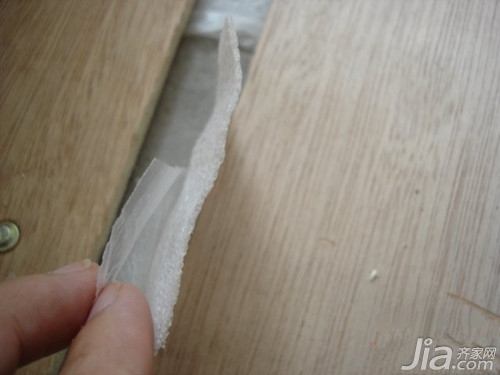The damp wall on the floor of the house feels that waterproofing can solve the problem. It is actually wrong. Ground moisture protection is actually a hidden project. If you do not do a good job in decoration, you will often be unable to make up afterwards, or you will pay a heavy price. What about the ground floor moisture barrier ? The following small series briefly introduces the ground floor moisture barrier practice .

·Requirements for ground floor protection
1. Remove dirt, mortar, and other debris from the base surface, re-erect the bricks that have been touched, fully wet and wet, and allow the surface to dry slightly.
2. Apply moisture barrier on both sides to ensure 20mm thickness. It is not allowed to use the thickness of the moisture barrier to adjust the deviation of the base elevation.
3, the surface of the mortar is rubbed with a wooden trowel, and when it starts to dry, it can be wiped (2 to 3 times). When applying pressure, sprinkle a little dry cement on the surface or brush a warm cement paste to further plug the mortar capillary passage. The construction of the moisture-proof layer shall be as far as possible without leaving the construction joints, and shall be done once at a time. If it is necessary to retain them, it shall be left at the entrance.
4. After the damp-proof mortar has been wiped, it can be watered and cured the next day. A 20mm thick 30mm thick layer of sand can be placed over the moisture barrier to cover a layer of brick and watered once a day to maintain a good moisture conservation environment. At least 3 days of conservation before you can build a wall on it.
5. For the construction of 60mm thick concrete ring beams, attention should be paid to the concrete gravel gradation and gravel clay content. The girder surface should be reinforced with trowel pressure, and can also be removed by dry cement calendering. The curing method should be the same as that of cement mortar. Floor.
6. Do not mix salt in mortar and concrete in moisture-proof layer. Under no-insulation condition, winter construction should not be carried out. The moisture barrier should be checked and accepted according to the concealed project.

· The necessity of ground moisture
On the first floor, tenants should generally consider applying moisture-proof treatment to the ground and one-meter-high walls before the renovation, so as to completely prevent the indoor water and gas from exceeding the standards due to the rise of underground moisture. The tidal gas will cause us a lot of trouble, so we must attach great importance to this issue. The moisture will corrode our floors and goods, and it will cause us to feel uncomfortable and even affect our quality of life.
It is easy for ordinary people to confuse the concept of moisture proof and water proof. The problem of moisture proof is often treated with a waterproof method. This will cause us to completely solve the problem of moisture prevention on the ground. The moisture protection needs to prevent the underground moisture (water vapor), and the waterproof protection is the groundwater (liquid water), so the ordinary waterproof layer is difficult to prevent the moisture from entering the room.

The relevant information on the ground floor's approach to moisture prevention has been introduced here for everyone. I hope this article has helped you. If you still have anything you don’t understand, you can follow our website and we’ll get back to you as soon as possible.
Entrance floor ground floor wooden floor tile price list moisture-proof mat moisture-proof gypsum board
Pressure Switch,Hvac Pressure Switch,Low Pressure Switch,Compressor Pressure Switch
LONG TERM ELEC. CO., LTD , https://www.longterm-hvac.com
